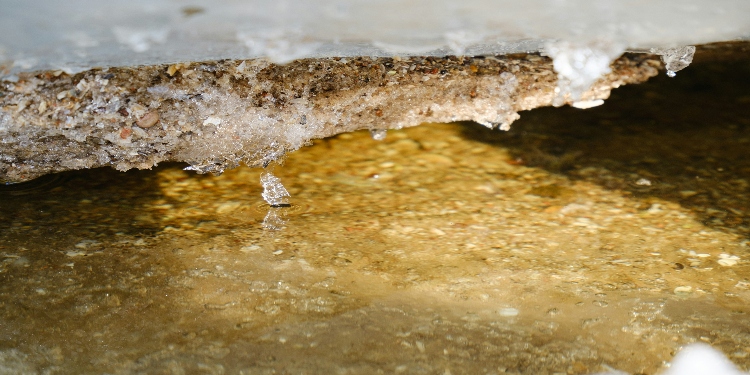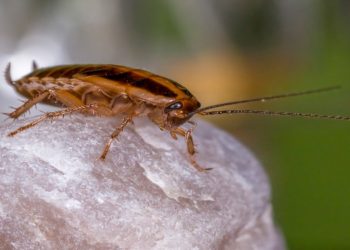Mold might be invisible to the naked eye, but its impact on health and property is significant. For homeowners, renters, and property managers, understanding the science of mold testing and what happens during a mold inspection is crucial. This knowledge not only ensures a safer living environment but also helps in making informed decisions about remediation and prevention.
Why Mold Testing Matters?
Mold can grow almost anywhere moisture is present. Common household molds such as Aspergillus, Penicillium, and Stachybotrys (commonly known as black mold) can lead to health problems, including respiratory issues, allergic reactions, and even more severe conditions for individuals with compromised immune systems. Mold testing and inspection are vital processes to identify the presence and extent of mold contamination, ensuring that appropriate measures are taken to mitigate its effects. You can also read the difference between surface and air mold testing methods.
What Triggers a Mold Inspection?
Several scenarios may prompt a mold inspection:
Visible Mold Growth
Obvious mold spots on walls, ceilings, or other surfaces.
Musty Odors
A persistent, unpleasant smell that suggests mold presence.
Water Damage
Past or present water leaks, flooding, or high humidity levels.
Health Symptoms
Occupants experiencing unexplained allergic reactions or respiratory issues.
The Mold Inspection Process
Initial Consultation and Visual Inspection
The process begins with an initial consultation, where the inspector gathers information about the property’s history, any known issues, and specific concerns from the occupants. This is followed by a comprehensive visual inspection
Exterior Check
Inspecting the property’s exterior for potential water intrusion points, such as cracks in the foundation, roof leaks, or poorly sealed windows and doors.
Interior Check
Assessing indoor areas, especially basements, attics, bathrooms, and kitchens, where moisture is likely to accumulate.
Moisture Mapping
Mold thrives in moist environments, so identifying moisture sources is crucial. Inspectors use tools like moisture meters and infrared cameras to detect hidden moisture behind walls, under floors, and in ceilings. This step helps pinpoint areas that may not show visible signs of mold but are at high risk for growth.
Air Sampling
Air sampling involves collecting air from different areas within the property, including both indoor and outdoor samples for comparison. This helps in identifying the type and concentration of mold spores present in the air:
Spore Traps
Devices like spore traps capture airborne particles, which are then analyzed in a laboratory.
Culture Plates
Air is directed onto culture plates to grow mold colonies for identification.
Surface Sampling
Surface sampling targets visible mold or suspected areas. Techniques include:
Swab Tests
A sterile swab collects mold from surfaces, which is then cultured and analyzed.
Tape Lift Sampling
Adhesive tape lifts mold from surfaces for microscopic examination.
Bulk Sampling
In some cases, bulk sampling is conducted where materials (e.g., drywall, insulation) are physically removed and sent to a lab for analysis. This helps in assessing the extent of mold penetration in building materials.
Laboratory Analysis
Samples collected during the inspection are sent to accredited laboratories for detailed analysis. This step identifies the mold species and provides information on the spore count, which helps in determining the severity of contamination.
Reporting and Recommendations
After the laboratory results are obtained, the inspector compiles a comprehensive report detailing:
Findings:
Types and concentrations of mold detected.
Locations
Areas of mold growth and extent of contamination.
Causes
Sources of moisture that contribute to mold growth.
Recommendations
Steps for remediation and prevention of future mold growth.
Remediation Plan
Detailed steps for removing mold and addressing the sources of moisture.
Clearance Testing
If recommended, details about the post-remediation testing process and how it ensures the effectiveness of the remediation efforts.
Long-Term Solutions
Suggestions for ongoing maintenance and monitoring to prevent future mold growth. This may include regular inspections or implementing moisture control measures.
Importance of Addressing Mold Contamination
Information on the potential health risks associated with mold exposure and why it is important to address mold contamination promptly and thoroughly.
Collaboration with Other Professionals
The inspector may also work closely with other professionals such as building engineers, environmental consultants, or healthcare providers to provide a comprehensive approach to addressing the mold issue.
Education and Awareness
The inspector may also provide educational resources and tips for building occupants on how to prevent mold growth and maintain a healthy indoor environment. This can include information on proper ventilation, cleaning practices, and recognizing signs of potential moisture issues.
Continuing Support
Information on how the inspector will continue to support the building owner even after the initial inspection and remediation process. This may include follow-up inspections or guiding ongoing maintenance and prevention.
The Importance of Professional Mold Inspection
While DIY mold testing kits are available, they often lack the accuracy and comprehensive assessment provided by professional mold inspectors. Certified inspectors have the expertise, tools, and access to accredited laboratories necessary for an accurate diagnosis and effective remediation plan. Professional inspections also help in determining the root cause of mold growth, which is essential for preventing future mold issues.
Preventing Mold Growth
Once the mold is remediated, preventing future growth is essential. Here are some tips:
Control Humidity
Keep indoor humidity levels below 60%. Use dehumidifiers in damp areas. Keep the home well-ventilated, especially in areas prone to moisture such as bathrooms and kitchens.
Fix Leaks
Regularly check for leaks in pipes, roofs, and windows. Repair any leaks immediately to prevent water from seeping into walls and creating a breeding ground for mold.
Proper Ventilation
Use exhaust fans in high-moisture areas like bathrooms and kitchens. Make sure they are venting to the outside of the building.
Regular Cleaning
Regularly clean and dry surfaces prone to moisture, such as shower curtains, bathroom walls, and window sills.
Regular Inspections
Periodically check for signs of water damage or mold, especially after heavy rains or flooding.













































































